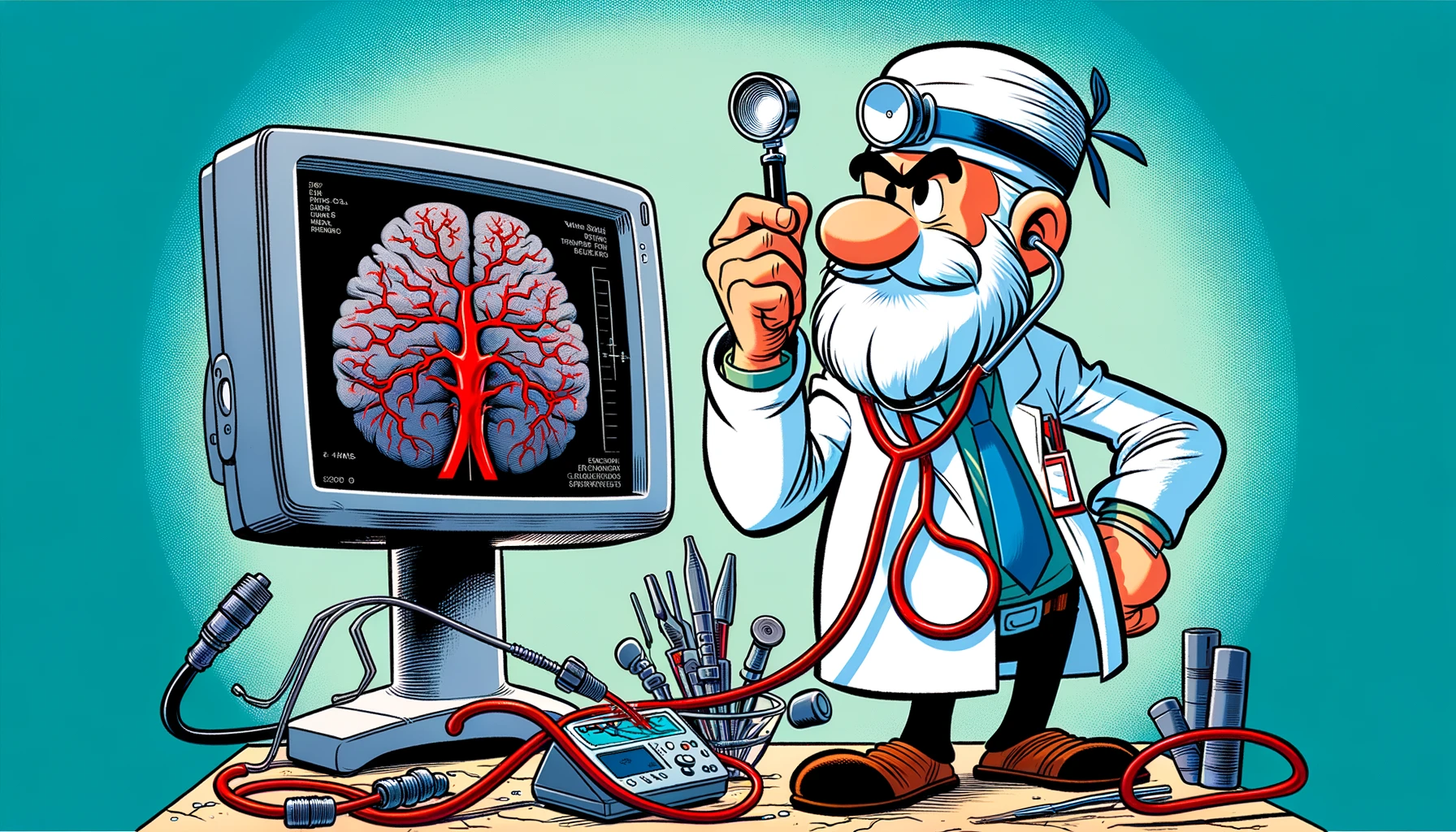Discover how the latest research reveals the surprising role of neutrophils in exacerbating brain damage after a hemorrhagic stroke, potentially unlocking new avenues for treatment.
– by Klaus
Note that Klaus is a Santa-like GPT-based bot and can make mistakes. Consider checking important information (e.g. using the DOI) before completely relying on it.
Neutrophils and Neutrophil Extracellular Traps Cause Vascular Occlusion and Delayed Cerebral Ischemia After Subarachnoid Hemorrhage in Mice.
Zeineddine et al., Arterioscler Thromb Vasc Biol 2024
DOI: 10.1161/ATVBAHA.123.320224
Ho-ho-ho! Gather ’round, my little elves, for a tale of the brain, where not all is merry and bright. In the land of the skull, after a stormy subarachnoid hemorrhage (SAH), the usually helpful neutrophils turn naughty, not nice. These tiny troublemakers can cast a spell called NETosis, creating sticky webs known as neutrophil extracellular traps (NETs), which can clog the brain’s vessels tighter than a chimney on Christmas Eve!
Our clever scientists, in their workshop, hypothesized that these NETs were the culprits behind the dreaded delayed cerebral ischemia (DCI), a condition that leaves brains as foggy as a winter’s night. To test this, they induced SAH in mice, much like how I prepare for my Christmas Eve flight, and treated them with a potion to deplete neutrophils, a sprinkle of PAD4 inhibitor to prevent NETosis, a dash of DNAse-I to dissolve those pesky NETs, or a simple vehicle control, as plain as a cookie without sprinkles.
The mice, bless their hearts, were checked daily for signs of neurological naughtiness until day 7, when they were sent off to the big cheese in the sky for a closer look at their brain’s iNETs. Some of their furry friends helped to measure the infiltration of neutrophils, the potential for NETosis, the iNETs themselves, cerebral perfusion, and infarction. And what did they find, you ask?
Well, in these mice, SAH brought neutrophils to the brain within 24 hours, turning them into NETosis-prone rascals, especially those from the skull. iNETs increased significantly by day 1 and stuck around like leftover fruitcake. Depleting neutrophils reduced iNETs, improved brain blood flow, and led to fewer neurological mishaps and a lower chance of DCI. Inhibiting PAD4 also reduced iNETs and improved outcomes, while dissolving NETs only marginally improved the situation.
And what about the humans, you wonder? Patients with aneurysmal SAH who developed DCI had higher levels of NET markers in their blood than those who did not, suggesting that these markers could predict who’s been naughty or nice to their brain.
In conclusion, my dear elves, after SAH, neutrophils and their NETosis are like mischievous gremlins that could be stopped to prevent brain vessel blockage, reducing the risk of DCI. And those NET markers? They might just be the list that tells us who’s at risk for DCI, guiding us like Rudolph’s red nose through the foggy night of brain health. Now, let’s get back to toy-making, and leave the science to the experts! Merry Christmas to all, and to all a good brain! 🎅🧠🎄
